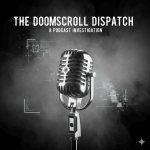In late April 2025, an elderly investor in the United States became the victim of a devastating social engineering attack. The prize for the hackers: 3,520 Bitcoin, worth over $330 million. What happened next was a masterclass in modern money laundering. The stolen funds were rapidly funneled through at least six different exchanges and swapped for Monero (XMR), a cryptocurrency famous for its promise of privacy. The massive purchases caused Monero’s price to surge by a verifiable 8.2% in just two hours, triggering such extreme volatility that some illiquid markets saw temporary intraday spikes as high as 50%.
This single, dramatic event is more than just another crypto-theft headline. It’s a key that unlocks the door to the crypto ecosystem’s most surprising and misunderstood secrets. It peels back the curtain on the popular narratives and reveals a far more complex—and often contradictory—reality. What follows are five critical truths, drawn from academic research, leaked data, and strategic analysis, that challenge everything you think you know about digital currency.
1. The World’s Most “Untraceable” Coin is Shockingly Easy to Trace
For criminals and privacy purists alike, Monero (XMR) is the holy grail: a digital currency advertised as completely untraceable. It is the preferred medium of exchange on darknet markets and the ransom currency for sophisticated cybercriminal gangs. Its core promise and entire reason for being is “untraceability.”
But a groundbreaking academic paper, “A Traceability Analysis of Monero’s Blockchain,” revealed a shockingly different reality. In a real-world analysis of Monero’s public ledger, researchers uncovered devastating flaws in its privacy protections.
• The Zero Mix-in Flaw: Monero’s privacy relies on “mix-ins,” which are decoy transactions used to hide the real sender. The analysis found that a staggering 65.9% of all Monero inputs used zero mix-ins. Without any decoys, these transactions were trivially traceable.
• The Cascade Effect: Each of these easily traced transactions created a domino effect. As researchers identified the real sender in one transaction, they could use that information to eliminate it as a decoy in other transactions. This “cascade effect” allowed them to de-anonymize other, seemingly protected transactions.
The final conclusion was stunning: a passive adversary—meaning someone with access only to the public blockchain data and no special hacking tools—could trace a conclusive 88% of all Monero inputs. This massive gap between theory and practice hasn’t gone unnoticed by authorities. The U.S. Internal Revenue Service (IRS) has awarded contracts to blockchain analysis firms like Chainalysis specifically to develop Monero-tracing tools, proving that the world’s most “private” coin is anything but.
But if the privacy is an illusion, what about the price itself? The data reveals an even more fragile foundation.
(more…)

